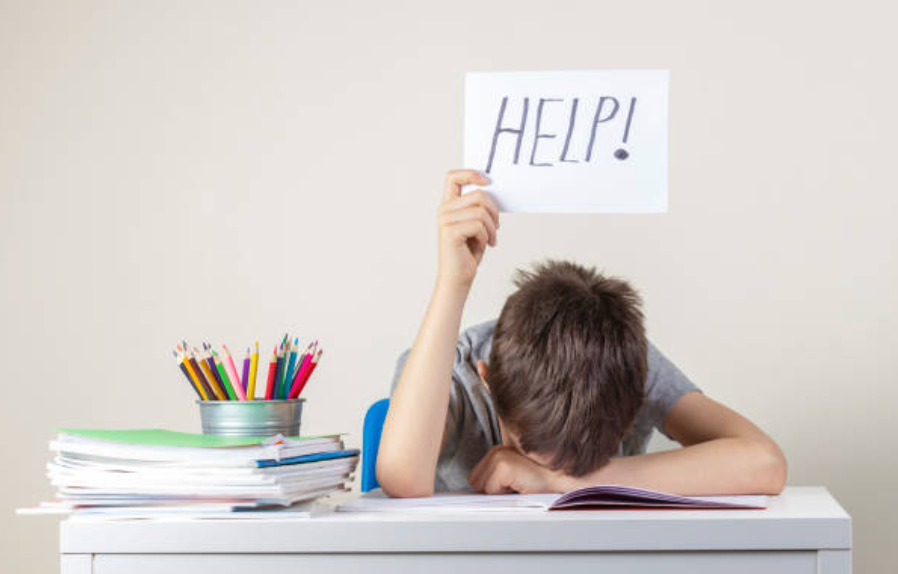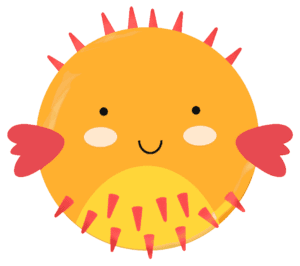
8 Dyslexia Myths and Misconceptions: Uncovering the Truth
If you have been teaching for any length of time, you most likely have had students who receive special education services. Many of these students have reading difficulties and will have SLD or “specific learning disability” listed on their IEP. What does that mean?
A specific learning disability is defined as a disorder in one of the basic learning processes involved in understanding or using language (spoken or written), that may cause significant difficulties in the ability to listen, speak, read, write, spell, or do math. A specific learning disability does not include learning problems that are primarily caused by a visual, auditory, motor, intellectual, or emotional/behavioral disability.
What is dyslexia?
So how does dyslexia fit into all of this? There are so many dyslexia myths floating around. So let’s talk about dyslexia IS.
Dyslexia is one kind of specific learning disability. It is characterized by deficits in accurate and fluent word recognition. Dyslexic students struggle with word recognition, decoding, and encoding (spelling). Parents often ask why dyslexia isn’t listed on their child’s IEP. The answer is that SLD is a wider umbrella term that can include dyslexia.

Dyslexia Myths and Misconceptions
Sometimes parents, and even teachers, are confused about what dyslexia is. I’ve had many parent-teacher conferences with loving and concerned parents who think their child is dyslexic. The conversation usually goes something like this…
Parent: I’m pretty sure Jenny is dyslexic. She writes a few letters and numbers backwards and mixes up B and D sometimes. Should we have her tested?
Teacher: I understand your concerns and I see the same things. But Jenny is just in first grade. It’s very common for children of her age to confuse Bs and Ds. A few letter reversals at this grade level are completely normal. Let’s see how she progresses with her reading over the next few months. So far she is doing well. She is learning her sight words and her fluency is on target.
There are a lot of ideas floating around about what dyslexia is and looks like, but not all of them are true. Here are a few of the most common dyslexia myths:
- Dyslexia is a medical condition.
- Dyslexic people have a low intelligence level.
- People with dyslexia see things backwards or in reverse.
- Reversing letters and numbers is one of the earliest signs of dyslexia.
- Dyslexic children will never learn to read.
- Gifted children cannot have dyslexia.
- Dyslexia is a very rare disorder.
- A child will eventually outgrow their dyslexia.
.
MYTH 1: Dyslexia is a medical condition.
Dyslexia is not classified as a medical problem and is not typically diagnosed by a doctor. It cannot be treated with medication. A learning specialist with training in reading, writing, and oral language assessment and diagnosis is qualified to diagnose dyslexia. Having dyslexia does not mean a person is unhealthy in any way. Since it is not a medical condition, insurance does not cover it.
.
MYTH 2: Dyslexic people have a low intelligence level or aren’t very smart.
There is no connection between dyslexia and intelligence. Dyslexic individuals can have a low, average, or high IQ. In fact, there are many highly intelligent and successful people with dyslexia. These include famous authors, scientists, business people, and entertainers.
Some names you may recognize: Thomas Edison, Henry Ford, Agatha Christie, Jay Leno, John Lennon, Leonardo Da Vinci, Steven Spielberg, Patricia Palacco, and Albert Einstein.
But like the rest of the population, most dyslexic people are of average intelligence.
.
MYTH 3: People with dyslexia see things backwards or in reverse.
This is one of the biggest and most common dyslexia myths! Dyslexia is not caused by vision problems and people with dyslexia do not see letters and words backwards.
This idea was disproven years ago in a study conducted at the University at Albany. In the study, both dyslexic and non-dyslexic students were shown and asked to reproduce a series of letters that none of them had ever seen before. The dyslexic students performed the task just as well as the non-dyslexic students, proving that their dyslexia was not a visual problem and did not affect their eyesight.
.
MYTH 4: Reversing letters and numbers is the earliest sign of dyslexia.
Many young children reverse letters and numbers when learning to write. Backwards writing (or mirror writing) is also quite common. All of these things are part of the normal developmental stages of writing. Dyslexic children may have difficulty naming letters and struggle to encode (spell) words correctly. But there is no evidence that they write letters, numbers, and words backward any more than other children.
.
MYTH 5: Dyslexic children will never learn to read.
Most children with dyslexia will be able to read. However, it may take longer and require specialized instruction to help them become proficient. Intensive, early intervention is key. It should be systematic, research-based, explicit instruction. People with dyslexia can even become very good readers with the appropriate interventions.
.
MYTH 6: Gifted children cannot have dyslexia.
This is simply not true. Many children have more than one learning difference. This is called having dual-exceptionalities or being twice-exceptional. It is entirely possible for a student to be both gifted and have a learning disability.
Some gifted children with an undiagnosed learning disability, including dyslexia, may appear lazy or unmotivated in the school setting. When the learning disability is recognized and addressed, the child’s giftedness becomes more apparent. As listed in myth #2, many highly intelligent and gifted people also have dyslexia.
.
MYTH 7: Dyslexia is very rare.
Dyslexia is actually one of the most common causes of reading difficulties in elementary aged children. According to the U.S. Department of Health and Human Services, dyslexia affects approximately 15% of the population. That’s a lot of people!
Dyslexia can range from mild to severe. Those with very mild dyslexia may never be formally identified because they are able to compensate and get through school without outside help.
.
MYTH 8: A child will eventually outgrow dyslexia.
Dyslexia is a lifelong condition. It does not just go away on it’s own. It is a brain-based phonological processing disorder. Dyslexic children grow into dyslexic adults.
While children don’t “recover’ from dyslexia, early identification and treatment can help them learn to read and write well and have a successful school career. Many students with dyslexia need help from a teacher or therapist who has had extensive training in a multi-sensory, structured language approach to reading instruction. If the child has an IEP, specialized services and accommodations can follow him all the way through college to ensure long-term success.
.
How do I know if one of my students has dyslexia?
If a child struggles with phonological awareness, decoding (reading) and encoding (spelling) using the rules of phonics, recognizing sight words, and keeping his or her place while reading – despite good instruction – you may want to talk with your school psychologist or special education teacher about the next steps to take. Typically this means setting up interventions and tracking the student’s response to them (RTI). This is an important step in determining if a child has a specific learning disability, including dyslexia. Classroom teachers must first provide specific interventions to see if they work. If the student continues to struggle, a qualified evaluator should do further testing.

Early intervention is of utmost importance when it comes to learning disabilities. The sooner a problem is recognized, the easier it is to address. Research has shown that reading interventions are most successful in kindergarten and first grade. Unfortunately, most children in the United States do not get diagnosed with dyslexia until the end of second grade or the beginning of third grade. This delay can make it much harder for dyslexic students to catch up to their peers.
So how do you recognize a student with dyslexia? Based on much research over the years, there are now clear signs and indicators of dyslexia that teachers can observe.
.
Characteristics of Dyslexia in School-Aged Children
Here are some of the things you may notice in a child with dyslexia based on age and developmental level:
Pre-K
- Difficulty learning the names of letters
- Difficulty recognizing letters in their own name
- Difficulty recognizing spoken words that rhyme like hot, pot, lot
.
Primary Grades (K-2)
- Difficulty remembering letter-sound correspondences
- Difficulty decoding and sounding out CVC words like sit, dog, or peg
- Difficulty with phoneme segmentation – breaking a word down into its individual sounds
- Difficulty breaking words into syllables orally
- Difficulty spelling decodable one-syllable words (grade 1-2)
.
Intermediate Grades through High School (3-12)
- Poor spelling
- Difficulty recalling and applying known phonics rules to new words
- Very slow acquisition of new reading skills
- Replacing unknown words in text with other words that look similar
- Replacing unknown words in text with other words that “make sense”
- Intense discomfort when reading aloud
- Avoidance of tasks the require reading
- Extreme difficulty learning a second language
.
Dyslexia Resources
If one of your students or your own child has just received a diagnosis of dyslexia, here are some other helpful websites and resources with more information:
- International Dyslexia Association
- LDOnline
- LDAmerica – Learning Disabilities Association of America
- The Dyslexia Foundation
- Dyslexia Canada
- Made by Dyslexia
- Dyslexia International
.
I hope this blog post has helped to dispel some of the myths about dyslexia. This common learning disability is something you will surely encounter during your teaching career. Knowing how to recognize the signs, advocating for your struggling students, and seeking help from experts in your school system will make a big difference for your special learners.



